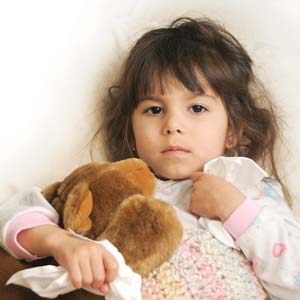 One of the most frightening times for any parent is when your child has a fever. Most parents can generally tell how sick their child is by how they look and how they are acting. Unfortunately, there are many misconceptions about fever and the treatment of fever that cause unnecessary anxiety.
One of the most frightening times for any parent is when your child has a fever. Most parents can generally tell how sick their child is by how they look and how they are acting. Unfortunately, there are many misconceptions about fever and the treatment of fever that cause unnecessary anxiety.
Fever is a completely normal response to infection. Even though most every child will develop a fever at some point, the key is for parents and caregivers to know when to be concerned. Fever is generally defined as a rectal temperature above 100.4°F, or an oral temperature above 100°F. Ear and forehead thermometers are less accurate and are generally not recommended.
According to a recent clinical report published by the American Academy of Pediatrics, the most important thing for parents and caregivers to understand is that fever, in and of itself, is not dangerous to an otherwise healthy child. Fever actually has the benefit of helping fight infections. There is no evidence that fever itself worsens an illness or causes long-term complications.
As a result of the AAP recommendations, the primary reason for treating a child with fever is to improve the child’s overall comfort. The goal should not be to bring the body temperature down to normal, but rather to make the child more comfortable. For the most part, the magnitude of the fever and whether or not the fever comes down with treatment are poor predictors of the degree of illness. In addition to fever management, it is also important to encourage appropriate fluid intake and to be on the lookout for signs of serious illness such as lethargy, unusual rash, or difficulty breathing.
Many parents fear that high fever causes seizures (known as febrile seizures) or brain damage, but that is largely untrue. Evidence has shown that febrile seizures are likely triggered by a rapid increase in body temperature and are not due to the degree of fever itself. In reality, most febrile seizures seem to occur in the early stages of an infection, often before parents realize there is a fever. As such, an initial febrile seizure is virtually impossible to predict or prevent. Furthermore, as frightening as febrile seizures sound, they are most often harmless.
When treating fever, acetaminophen (Tylenol) and ibuprofen (Advil or Motrin) are the recommended medications. Dosing should be based on a child’s weight and not on his or her age. Aspirin is not recommended for children under 18 years of age due to concerns that it can cause a rare but serious illness known as Reye’s syndrome.
There is some evidence that using both acetaminophen and ibuprofen may be more effective in reducing fever and improving overall comfort in children, but this should be discussed with your pediatrician or healthcare provider. Parents need to be familiar with the various formulations of fever medications and should have accurate dosing instructions and devices (measuring cups, syringes). Be aware that many over-the-counter cold medications also contain acetaminophen.
Giving acetaminophen in addition to some of these medications can lead to your child getting more acetaminophen than is recommended.
When should you bring your feverish child to a healthcare provider?
• If your child is lethargic or inconsolable, refuses to drink fluids, or is having difficulty breathing.
• If, when taken rectally, your infant younger than three months has a fever above 100.4°F.
• If you observe signs of dehydration such as significantly decreased urination, dry mouth and lips, or crying without tears.
• If your child has a febrile seizure.
• If your child has a fever for more than three days.



